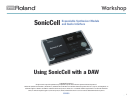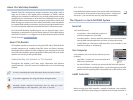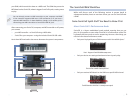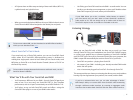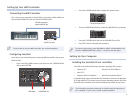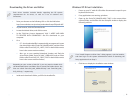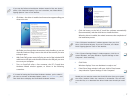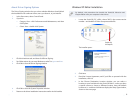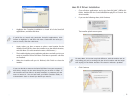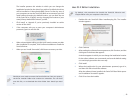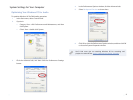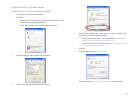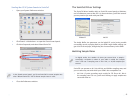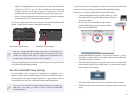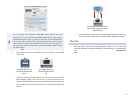
3
your DAW, which records the data on a MIDI track. The DAW also passes the
MIDI data back to SonicCell, where it triggers SonicCell’s synth, causing notes
to play.
You can directly connect a MIDI controller to your computer and DAW
if the controller supports MIDI over a USB connection or if you have a
separate MIDI interface. In these booklets, though, we’ll assume you’re
connecting your MIDI controller to SonicCell’s MIDI IN jack.
After connecting your SonicCell, computer, and MIDI controller to AC power,
you connect
your MIDI controller—
• to SonicCell using a MIDI cable.
SonicCell to your computer—
• using the included SonicCell USB cable.
Here’s how MIDI and audio data moves between the system’s components:
MIDI data is passed
Live audio...
goes to DAW for recording. DAW output is heard...
through SonicCell.
M
I
D
I
through SonicCell...
...to DAW for recording.
plays SonicCell patches.
MIDI data from DAW...
U
S
B
U
S
B
U
S
B
U
S
B
The SonicCell/DAW Workflow
While we’ll discuss each of the following actions in greater detail in
subsequent booklets, here’s an overview of how you can use SonicCell with
a DAW.
Some SonicCell Synth Stuff You Need to Know First
About SonicCell’s Performance Mode
SonicCell is a 16-part multitimbral synth module, meaning that you can
play 16 of its patches at once when SonicCell is in Performance mode. This
is generally the best mode to use for sequencing. Here are a few things you
need to know about Performance mode:
Each patch is played by one of Performance mode’s 16 available “parts.”
•
Parts 1-16 appear in SonicCell’s default startup screen.
Each part has its own settings that determine how its patch plays.•
This is the first screenful of settings for Part 1.
Each part receives MIDI data from the DAW on a specific MIDI channel.•
The MIDI channel to which Part 1 is currently set to respond.



